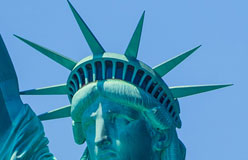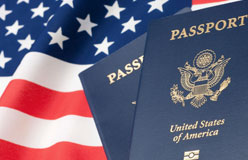America’s first immigrants walked here. Some 15,000 or more years ago, they walked over land that used to connect Asia and North America. That land has since sunk under the ocean. For thousands of years, their children and their children’s children moved east and south. Eventually, there were people on two whole continents.
Then in 1492, Europeans “discovered” those continents and claimed them for their own. The European colonization of America started with a drop. A few settlers came over looking for a better life in a new land. Soon the drop became a trickle. Boatloads of immigrants arrived from Spain, France, and Britain. Eventually the trickle became a stream. Then the stream turned into a flood. In the 40 years between 1880 and 1920, around 25 million immigrants entered the United States. The flood of immigration slowed down for a while, but the river has never stopped. Every day, new immigrants show up, looking for a better life than they had in their native country.








